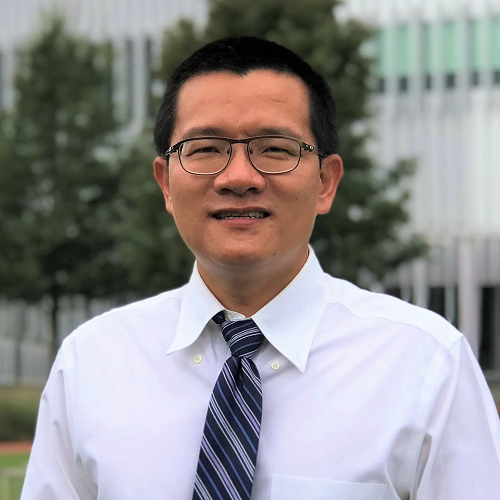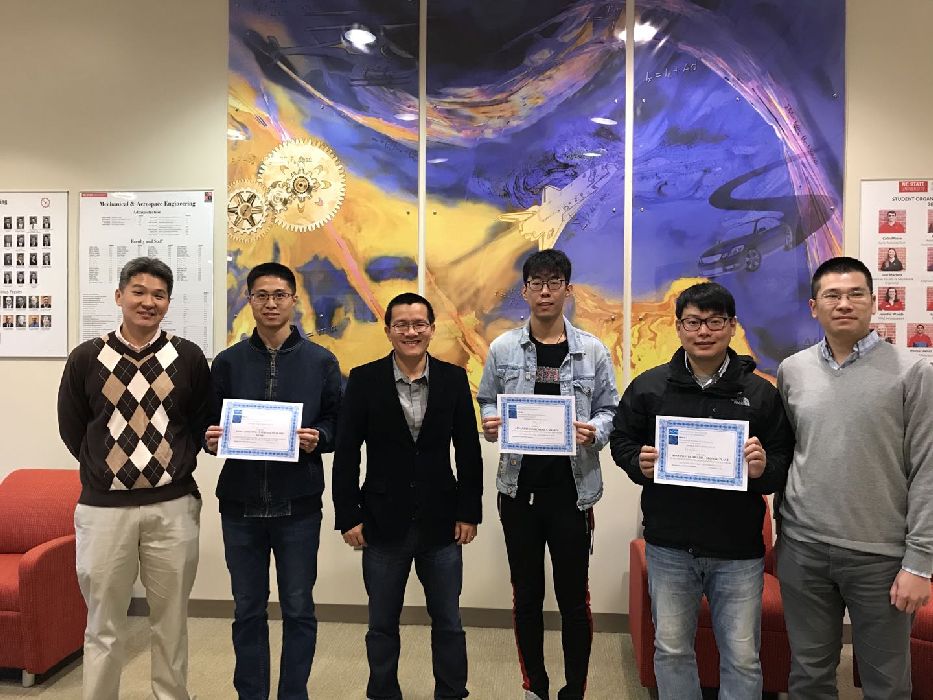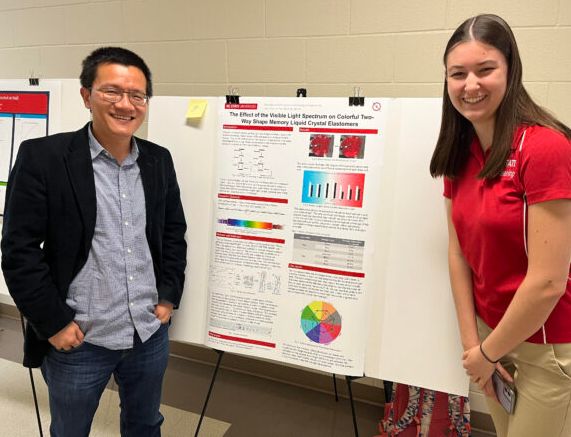
Dr. Yin received his Ph.D. in Engineering Mechanics from Columbia University. Prior to join NC State, he worked as a Postdoctoral Associate at MIT and an Assistant and Associate Professor at Temple University. He is the recipient of the NSF CAREER Award and Extreme Mechanics Letters (EML) Young Investigator Award.
His areas of interest include mechanical metamaterials, mechanics guided design of soft robotics, and multifunctional materials. His research group – Yin Lab – explores the basic mechanics and functionality of novel materials and structures at all scales.
His recent work on butterfly-stroke soft swimmer caught our attention and so we tried to touch base with him for an interview. We got lucky, he agreed for an email interview with us, which goes as follow:
Please tell us how you initially became involved with Mechanical and Aerospace Engineering?
I did my B.E. and M.S. in marine engineering and engineering mechanics. Both are the core areas of mechanical engineering. I found creating engineered structures is very fun since engineering is on how to create something new and useful, while science is on answering why things work.
We would like to know more about the butterfly robots with bistable wings system technology? What stage of clinical development is it?
The butterfly swimming soft robot is a recent prototype we created in my group. It has several unique characteristics:
First, it is fast. It achieves a record-high average swimming speed of 3.74 body length/second. This speed is even close to the relative speed of penguins, which is about 4 body length/second.
Second, its swimming is energy efficient. It means that it consumes less energy to swim fast for longer distance. Its propulsion energy efficiency is even comparable to most of flapping marine animals.
Third, it is lightweight. It only weighs 2.8 grams, like the weight of a penny coin.
Fourth, it looks more like a manta ray but swims like human’s butterfly stroke style. It has one soft body that can bend upward and downward together with a pair of bistable wings. The bending of the soft body drives the quick flapping and rotation of its wings induced by snapping. The snapping of wings propels the swimmer move fast and cruise to save energy.
Currently, it is still a promising prototype in the lab. For practical applications, it still needs improvements. First is to make it untethered. The current version is tethered to air supply. Second is to swim both close to water and under water. Third is to integrate sensors on board for ocean exploration.

What is your take on potential synergy between microfluidics and soft robotics? Do you think in the future of soft robotics, scientists can leverage the advantages of the two fields?
The two areas of microfluidics and soft robotics are closed related to each other, especially for fluid-driven soft actuators and soft robots. The early stage of soft robotics is from microfluidics to fabricate the small-size air or fluidic channels for actuating small-scale soft robots.
Later, due to the limitations in fabrication, it switches to a larger millimeter and centimeter scale. However, given the rapid development in the area of microfluidics, it creates promising opportunities to design miniature or micro-scale soft robots that could be potentially used inside human body for biomedical applications.
Nature is saturated with an inspiring source of knowledge. And biomimicry gives an upper edge when it comes to extra capabilities. Does this mean then that there is no limit to what we could achieve with biomimicry?
The soft swimming robot we developed mimics the flapping motion of manta ray and butterfly stroke in humans. To some extent, our engineered design is even beyond the natural designs. The wings of a manta ray are not bistable and cannot flap fast within 40 ms.
My point is that we first learn from the mother nature by exploring and understanding why and how. Then, we may get rid of the constraints in natural systems to even expel their counterparts in an engineered system.
Do you think, self-supervised learning can lead AI systems to human-level intelligence?
This question is kind of far from my research area. I feel it could be in the intelligence but not the emotions as humans. Humans are warm and machines are cold.
What are your other interests besides engineering …reading, painting, gardening, skiing maybe?
I like reading, hiking, biking, and gardening for relaxation.

Someone comes up to you and says, “I wanna be just like you. I want to be a “Materials Scientist”, what advice would you give?
In every field, it has own role models. In academia, it is the same. The role model can help to motivate the young generations. The road to be a scientist or engineer is a fun journey. One may ask yourself if exploring or creating something new that could change the way people are thinking excites you. If yes, you will have a self-motivation and passion. Then, find a model in your interest area and follow their wok to learn more from them. Next, trying to challenge yourself to see if you can do even better.
Last but not the least, what is your favorite movie quote?
Life is like a box of chocolates. You never know what you’re gonna get.
It also applies to the science. You never know what you’are gonna get for the next exciting things.
Dr. Yin, it has been a real pleasure! I can’t thank you enough. Your work is truly an inspiration. We look forward to visit you again and see more of your research. Till then, we wish you all the very best for your future endeavor.



